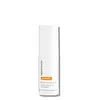What's inside
What's inside
 Key Ingredients
Key Ingredients

 Benefits
Benefits

 Concerns
Concerns

No concerns
 Ingredients Side-by-side
Ingredients Side-by-side

Cyclopentasiloxane
EmollientDimethicone
EmollientPolysilicone-11
Ascorbic Acid
AntioxidantMica
Cosmetic ColorantButyrospermum Parkii Butter
Skin ConditioningSilica
AbrasiveCI 77891
Cosmetic ColorantCannabis Sativa Seed Oil
EmollientCannabis Sativa Flower/Leaf/Stem Extract
AntioxidantCamellia Sinensis Leaf Extract
AntimicrobialTartaric Acid
BufferingLinoleic Acid
CleansingHydroxyapatite
AbrasiveCholesterol
EmollientSqualane
EmollientCreatine
Skin ConditioningCaffeine
Skin ConditioningMagnolia Grandiflora Bark Extract
AntimicrobialSodium Hyaluronate
HumectantGlabridin
BleachingOrmenis Multicaulis Oil
MaskingPentaerythrityl Tetraisostearate
EmollientSalvia Sclarea Oil
MaskingHordeum Vulgare Extract
EmollientCI 77491
Cosmetic ColorantTriticum Vulgare Germ Oil
EmollientCyclopentasiloxane, Dimethicone, Polysilicone-11, Ascorbic Acid, Mica, Butyrospermum Parkii Butter, Silica, CI 77891, Cannabis Sativa Seed Oil, Cannabis Sativa Flower/Leaf/Stem Extract, Camellia Sinensis Leaf Extract, Tartaric Acid, Linoleic Acid, Hydroxyapatite, Cholesterol, Squalane, Creatine, Caffeine, Magnolia Grandiflora Bark Extract, Sodium Hyaluronate, Glabridin, Ormenis Multicaulis Oil, Pentaerythrityl Tetraisostearate, Salvia Sclarea Oil, Hordeum Vulgare Extract, CI 77491, Triticum Vulgare Germ Oil
Water
Skin ConditioningOctyldodecyl Neopentanoate
EmollientButylene Glycol
HumectantGlyceryl Stearate
EmollientGluconolactone
Skin ConditioningLactobionic Acid
BufferingPropylene Glycol Hydroxystearate
Skin ConditioningStearyl Alcohol
EmollientArginine
MaskingPEG-40 Stearate
EmulsifyingCetyl Alcohol
EmollientDimethicone
EmollientCamellia Sinensis Leaf Extract
AntimicrobialAscophyllum Nodosum Extract
Skin ConditioningCucumis Sativus Fruit Extract
EmollientAsparagopsis Armata Extract
Skin ProtectingTetrahexyldecyl Ascorbate
AntioxidantTocopheryl Acetate
AntioxidantPalmitoyl Tetrapeptide-7
Skin ConditioningCeteth-20
CleansingSorbitol
HumectantPalmitoyl Tripeptide-1
Skin ConditioningPanthenol
Skin ConditioningSodium Hyaluronate
HumectantPEG-75 Stearate
N-Hydroxysuccinimide
Skin ConditioningGlycerin
HumectantChrysin
Skin ConditioningNylon-12
Steareth-20
CleansingXanthan Gum
EmulsifyingDisodium EDTA
Sodium Bisulfite
AntioxidantBHT
AntioxidantCaprylyl Glycol
EmollientPhenoxyethanol
PreservativeChlorphenesin
AntimicrobialCI 19140
Cosmetic ColorantWater, Octyldodecyl Neopentanoate, Butylene Glycol, Glyceryl Stearate, Gluconolactone, Lactobionic Acid, Propylene Glycol Hydroxystearate, Stearyl Alcohol, Arginine, PEG-40 Stearate, Cetyl Alcohol, Dimethicone, Camellia Sinensis Leaf Extract, Ascophyllum Nodosum Extract, Cucumis Sativus Fruit Extract, Asparagopsis Armata Extract, Tetrahexyldecyl Ascorbate, Tocopheryl Acetate, Palmitoyl Tetrapeptide-7, Ceteth-20, Sorbitol, Palmitoyl Tripeptide-1, Panthenol, Sodium Hyaluronate, PEG-75 Stearate, N-Hydroxysuccinimide, Glycerin, Chrysin, Nylon-12, Steareth-20, Xanthan Gum, Disodium EDTA, Sodium Bisulfite, BHT, Caprylyl Glycol, Phenoxyethanol, Chlorphenesin, CI 19140
Alternatives
Ingredients Explained
These ingredients are found in both products.
Ingredients higher up in an ingredient list are typically present in a larger amount.
Camellia Sinensis Leaf Extract is derived from the leaves of the tea plant. Black tea, green tea, and oolong tea are all harvested from this plant.
This ingredient has many skin benefits:
This ingredient contains polyphenols, a strong antioxidant. Antioxidants help fight off molecules that damage skin cells.
On top of that, the antioxidants in green tea neutralize free-radicals from the sun. This gives the skin some extra UV protection, but should not replace sunscreen.
Many components of tea have anti-inflammatory properties.
Polyphenols and L-theanine help soothe the skin and reduce irritation. The caffeine in Camellia Sinensis Leaf Extract helps calm inflamed blood vessels.
Other compounds found in tea include: Vitamin Bs, linoleic acid, magnesium, calcium, iron, and zinc.
Research has shown both drinking Camellia Sinensis Leaf Tea and applying it to the skin can help boost skin elasticity and hydration. Studies also show using tea extract may reduce sebum, or oil, production.
Learn more about Camellia Sinensis Leaf ExtractDimethicone is a type of synthetic silicone created from natural materials such as quartz.
What it does:
Dimethicone comes in different viscosities:
Depending on the viscosity, dimethicone has different properties.
Ingredients lists don't always show which type is used, so we recommend reaching out to the brand if you have questions about the viscosity.
This ingredient is unlikely to cause irritation because it does not get absorbed into skin. However, people with silicone allergies should be careful about using this ingredient.
Note: Dimethicone may contribute to pilling. This is because it is not oil or water soluble, so pilling may occur when layered with products. When mixed with heavy oils in a formula, the outcome is also quite greasy.
Learn more about DimethiconeSodium Hyaluronate is hyaluronic acid's salt form. It is commonly derived from the sodium salt of hyaluronic acid.
Like hyaluronic acid, it is great at holding water and acts as a humectant. This makes it a great skin hydrating ingredient.
Sodium Hyaluronate is naturally occurring in our bodies and is mostly found in eye fluid and joints.
These are some other common types of Hyaluronic Acid:
Learn more about Sodium Hyaluronate